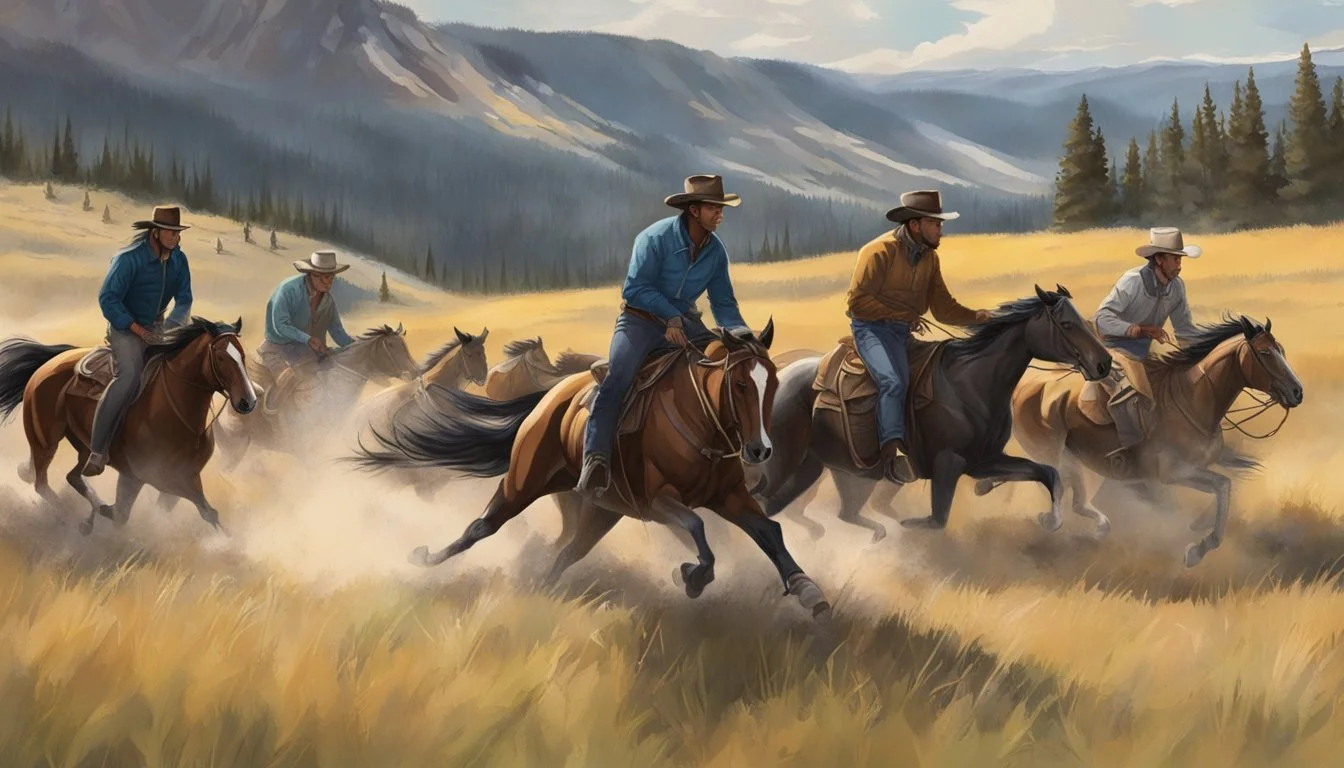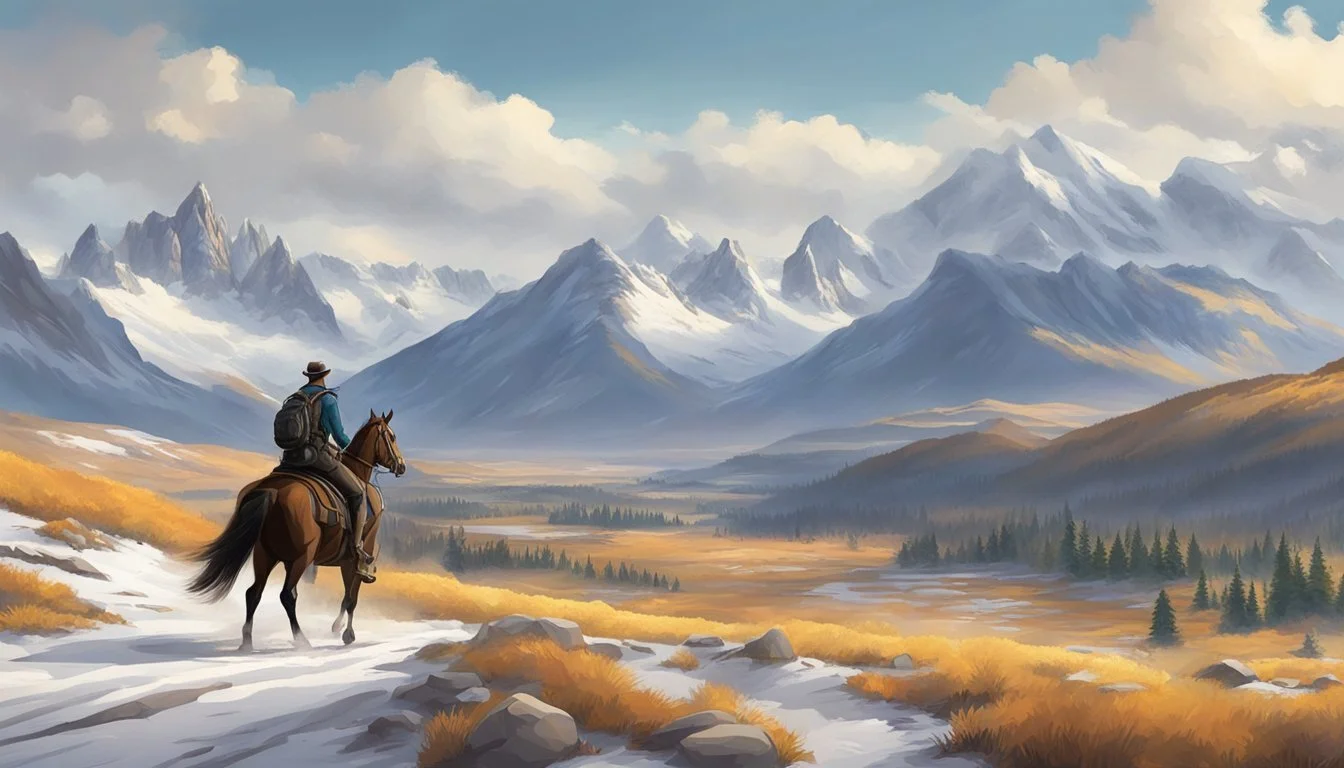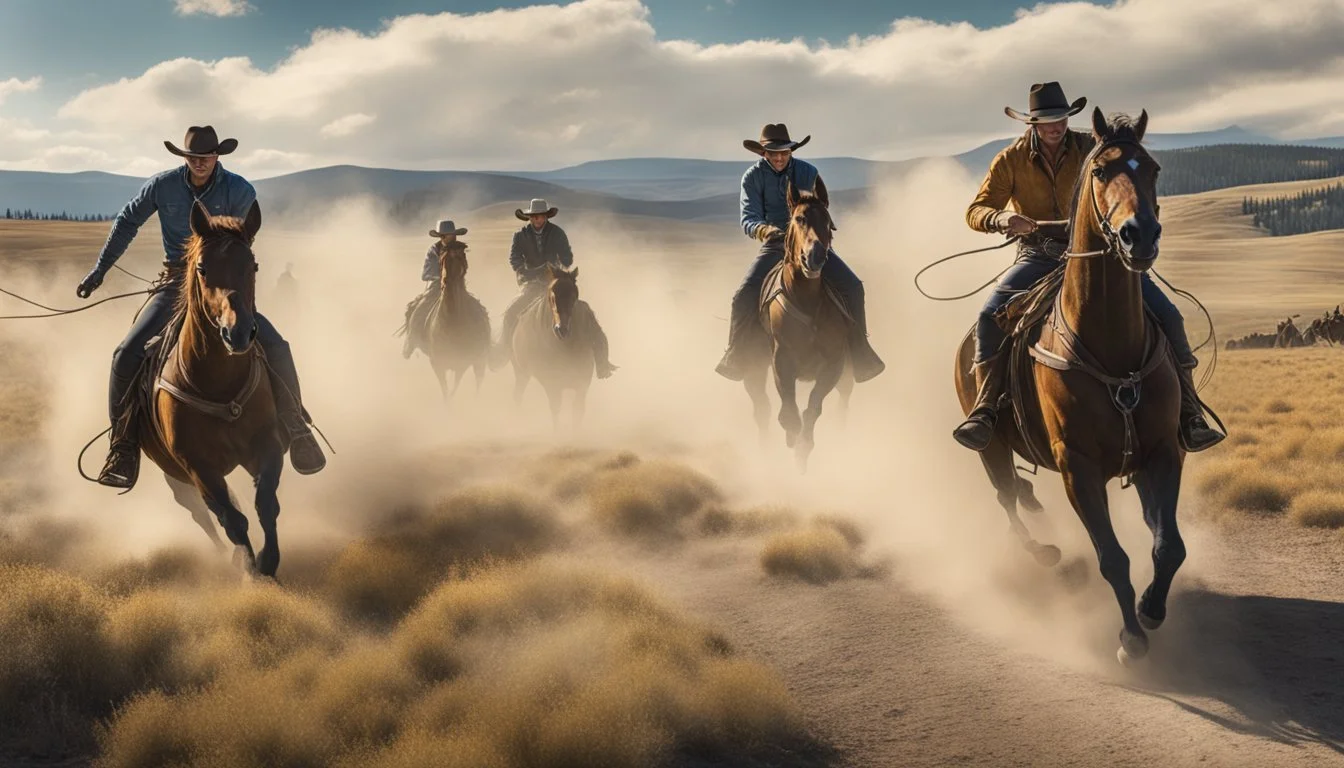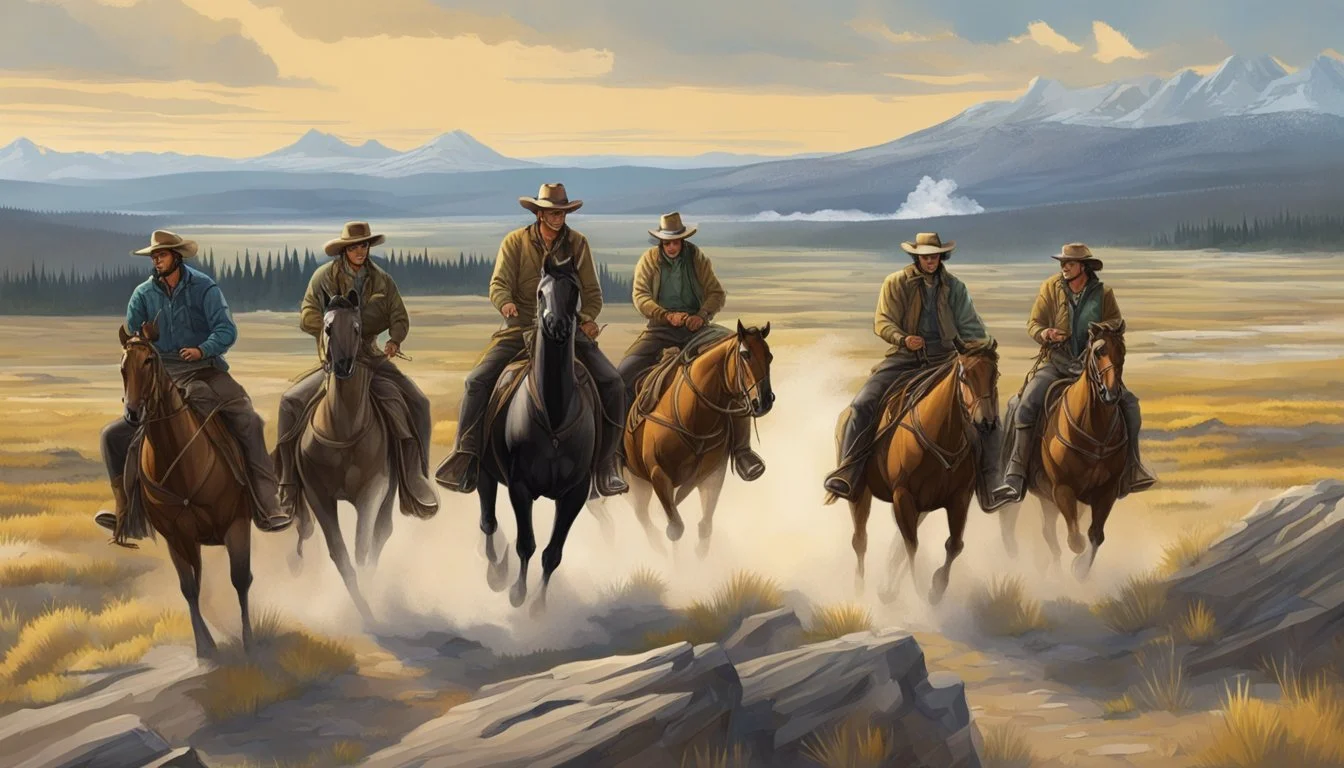Discover the Hidden Secrets of Ranches in Yellowstone That Will Shock You
The hit TV series Yellowstone has captivated audiences with its stunning portrayal of ranch life in Montana. At the heart of the show lies the Yellowstone Dutton Ranch, a vast and picturesque property that serves as the backdrop for the Dutton family's dramatic saga. The real-life location of the Yellowstone Dutton Ranch is the Chief Joseph Ranch, a 2,500-acre working cattle ranch in Darby, Montana.
While the show is set in Montana, much of the filming for the first three seasons actually took place in Utah. The production team carefully selected locations that capture the essence of the Montana landscape, including its rugged mountains, sprawling plains, and pristine rivers. These scenic backdrops contribute to the show's immersive atmosphere and help bring the world of the Dutton family to life.
The fictional Yellowstone Dutton Ranch is depicted as an enormous and valuable property. In the show, the ranch faces constant threats from developers and other interested parties seeking to acquire portions of the land. This struggle for control of the ranch's vast acreage forms a central conflict in the series, highlighting the complex relationship between land ownership, family legacy, and economic pressures in the modern American West.
Ranches in Yellowstone: An Overview
Ranches play a central role in the Yellowstone region, shaping its landscape, culture, and economy. These vast properties showcase the rugged beauty of the American West while preserving traditional ways of life.
Historical Significance of Ranches
Ranches have been integral to Yellowstone's history since the late 19th century. Early settlers established cattle operations, taking advantage of the area's abundant grasslands. These ranches formed the backbone of the local economy, providing jobs and sustaining communities.
Many historic ranches still stand today, offering glimpses into the past. Some have been preserved as museums or converted into guest accommodations. The Chief Joseph Ranch, featured in the TV show "Yellowstone," exemplifies this blend of history and modern use.
Ranching traditions continue to influence the region's culture. Annual events like rodeos and cattle drives celebrate this heritage, attracting visitors from around the world.
Modern Ranches and Tourism
Today, ranches in Yellowstone serve diverse purposes. Working cattle ranches maintain traditional practices while adapting to modern challenges. These operations balance livestock management with conservation efforts, preserving critical habitats for wildlife.
Guest ranches have become popular tourist destinations. They offer visitors authentic Western experiences, including horseback riding, fishing, and cattle drives. Many provide luxury accommodations, blending rustic charm with modern amenities.
Some ranches near Yellowstone National Park collaborate with conservation organizations to protect wildlife corridors. This partnership helps maintain the ecosystem's health while supporting sustainable ranching practices.
The TV series "Yellowstone" has sparked renewed interest in ranch life. It showcases the complexities of modern ranching, from land management issues to conflicts with developers and government agencies.
The Dutton Ranch
The Dutton Ranch serves as the centerpiece of the Yellowstone series, embodying the rugged spirit of the American West. This vast property showcases breathtaking landscapes and represents generations of ranching heritage.
Dutton Family Legacy
The Dutton family has owned and operated their ranch for multiple generations. John Dutton, the current patriarch, fiercely protects the land and its legacy. His ancestors homesteaded the property in the late 19th century, establishing deep roots in Montana's ranching culture.
The ranch has faced numerous challenges over the years, from economic pressures to land disputes. These struggles have shaped the Dutton family's resilience and determination to preserve their way of life.
Locations and Landscapes
The fictional Yellowstone Dutton Ranch is primarily filmed at the real-life Chief Joseph Ranch in Darby, Montana. This working cattle ranch provides the stunning backdrop for the show's iconic scenes.
Majestic mountains, rolling hills, and winding rivers create a picturesque setting. The ranch's expansive acreage encompasses diverse terrain, from grazing pastures to forested areas.
The main lodge serves as the Dutton family home, featuring classic Western architecture. Additional structures like barns, corrals, and bunkhouses complete the authentic ranch atmosphere.
Ranch Operations and Livelihood
Cattle ranching forms the core of the Dutton Ranch's operations. The family manages large herds across their vast property, employing traditional and modern ranching techniques.
The ranch also diversifies its income through other activities:
Horse breeding and training
Hay production
Limited tourism and guest experiences
John Dutton and his children actively participate in daily ranch work, from branding cattle to mending fences. They employ a dedicated team of ranch hands to help maintain the property and care for the livestock.
The ranch faces ongoing financial pressures, with external interests often seeking to acquire portions of the valuable land. This struggle to maintain their legacy and livelihood drives much of the series' conflict.
Chief Joseph Ranch
Chief Joseph Ranch, located in Darby, Montana, plays a significant role in the "Yellowstone" TV series and has a rich historical background. The ranch serves as both a working cattle operation and a popular filming location.
Chief Joseph and Nez Perce Tribe
The ranch is named after Chief Joseph, a renowned leader of the Nez Perce tribe. In 1877, Chief Joseph led his people through the Bitterroot Valley during their attempt to escape to Canada. The area where the ranch now stands was part of their route.
The Nez Perce's journey through this region left a lasting impact on local history. Today, the ranch honors this legacy through its name and by preserving some of the area's cultural heritage.
The Ranch as a Filming Location
Chief Joseph Ranch serves as the primary filming location for "Yellowstone," doubling as the fictional Dutton Ranch. The 2,500-acre property provides an authentic backdrop for the show's depiction of modern ranch life.
When not used for filming, the ranch operates as a guest accommodation. Visitors can stay in the Ben Cook Cabin, one of the structures featured in the series.
The ranch's picturesque setting in the Bitterroot mountain range adds to its appeal as a filming location. Its use in "Yellowstone" has increased interest in the property and the surrounding area of Darby, Montana.
Filming of Yellowstone Series
The hit TV series Yellowstone brings the rugged beauty of Montana to screens worldwide. A talented cast and crew work tirelessly to capture the essence of ranch life against stunning natural backdrops.
The Yellowstone Cast
Kevin Costner leads the ensemble as patriarch John Dutton. His commanding presence anchors the show's complex family dynamics. The cast includes Luke Grimes, Kelly Reilly, and Wes Bentley as the Dutton children.
Cole Hauser portrays fan-favorite Rip Wheeler. His chemistry with Kelly Reilly's Beth Dutton is a highlight for many viewers. Native American actors like Gil Birmingham and Kelsey Asbille bring authenticity to important storylines.
The actors underwent extensive horseback riding and ranching training. This preparation allows them to convincingly portray life on a working cattle ranch.
Behind the Scenes
Creator Taylor Sheridan draws on his Texas upbringing to craft Yellowstone's world. His attention to detail extends to every aspect of production. The show primarily films at the Chief Joseph Ranch in Darby, Montana.
This 2,500-acre working ranch serves as the fictional Dutton Ranch. Its sprawling grounds and historic buildings provide an authentic backdrop. Additional filming takes place across Montana and Utah.
The crew faces challenges like unpredictable weather and working with livestock. They often shoot long days to capture the perfect light for outdoor scenes. Careful coordination ensures the safety of cast, crew, and animals during complex stunts and cattle drives.
Accommodations and Amenities
The Yellowstone show features various ranch accommodations that offer guests a taste of authentic Western living. These lodgings provide comfortable amenities while maintaining the rugged charm of Montana's landscape.
Staying at a Working Ranch
Chief Joseph Ranch, the filming location for the Dutton family's home, offers guests the opportunity to stay in two cabins featured on the show. The Fisherman Cabin and Lee Dutton's Cabin can each accommodate up to eight people. These rentals include fully equipped kitchens and stunning views of the surrounding mountains. Prices range from $1,400 to $1,700 per night.
The cabins provide a unique blend of modern comforts and rustic aesthetics. Guests can experience the day-to-day operations of a working ranch while enjoying the picturesque scenery that serves as the backdrop for the popular TV series.
Experience and Activities
Staying at a Yellowstone-inspired ranch offers visitors a range of authentic Western experiences. Guests can participate in horseback riding, cattle drives, and fishing expeditions. Some ranches provide guided tours of filming locations, allowing fans to see iconic spots from the show up close.
Many properties offer additional amenities such as hot tubs, fire pits, and outdoor dining areas. These features allow guests to fully immerse themselves in the Montana lifestyle. Some ranches also organize events like cowboy cookouts and line dancing lessons to enhance the Western experience.
Cultural and Historical Context
The Yellowstone region holds deep historical significance, shaped by exploration and conflict. Key events like the Lewis and Clark expedition and the Nez Perce War left lasting impacts on the area's development.
The Legacy of Lewis and Clark
Meriwether Lewis and William Clark's expedition in 1804-1806 marked a pivotal moment for the Yellowstone region. Their journey through Montana's Bitterroot Valley opened up the West for further exploration and settlement.
The expedition documented the area's rich natural resources and diverse wildlife. This sparked interest in the region's potential for ranching and resource extraction.
Lewis and Clark's interactions with Native American tribes, including the Nez Perce, laid the groundwork for future relationships between settlers and indigenous peoples. Their detailed maps and journals provided valuable information for those who followed in their footsteps.
The Nez Perce War
The Nez Perce War of 1877 dramatically impacted the Yellowstone area. This conflict arose when the U.S. government attempted to forcibly relocate the Nez Perce tribe from their ancestral lands in the Bitterroot Valley.
Led by Chief Joseph, the Nez Perce embarked on a 1,170-mile journey to escape U.S. troops. Their path took them through present-day Yellowstone National Park.
The war ended with the Nez Perce's surrender near the Montana-Canada border. This conflict reshaped the region's demographics and land ownership patterns, paving the way for increased cattle ranching and homesteading in the area.
Regional Geography
The Yellowstone setting features striking landscapes shaped by rivers and mountain ranges. These natural features provide a dramatic backdrop for the show's ranch life and conflicts.
Bitterroot River and Valley
The Bitterroot River winds through western Montana, carving a picturesque valley. This waterway plays a crucial role in the region's ecology and agriculture. The river supports diverse wildlife and provides irrigation for ranches and farms.
Cottonwood-lined banks offer shade and habitat along the Bitterroot's course. The valley floor spreads wide, creating prime grazing land for cattle operations. Rich soil deposits from millennia of flooding make the area agriculturally productive.
Ranchers in the show often contend with water rights issues tied to the Bitterroot. Access to this vital resource can spark tensions between neighboring properties.
The Sapphire Mountains
East of the Bitterroot Valley rise the rugged Sapphire Mountains. This range forms part of the Rocky Mountain chain, with peaks reaching over 8,000 feet. Dense forests of pine and fir cover the slopes, providing timber resources and wildlife habitat.
The Sapphires create a rain shadow effect, influencing local climate patterns. This impacts ranching operations portrayed in Yellowstone, as available moisture affects grazing conditions.
Mining history in the Sapphires adds depth to the region's economic backstory. Old claims and prospecting sites dot the landscape, hinting at past resource extraction booms.
Steep terrain in the Sapphires presents challenges for ranchers moving cattle between summer and winter pastures. These seasonal migrations form key plot points in the series.
Recreational Activities
The Yellowstone Dutton Ranch offers a variety of outdoor activities that showcase the beauty and tradition of Montana ranch life. Guests can immerse themselves in authentic Western experiences while enjoying the stunning natural surroundings.
Horseback Riding and Rodeos
Horseback riding is a quintessential ranch activity at the Yellowstone Dutton Ranch. Experienced wranglers lead guided trail rides through scenic mountain paths and open meadows. Riders of all skill levels can explore the vast property and take in breathtaking views.
The ranch hosts weekly rodeo events during peak seasons. These exhibitions feature skilled cowboys demonstrating techniques like calf roping, barrel racing, and bull riding. Guests can watch from the stands or try their hand at beginner-friendly activities like roping lessons.
For those seeking a more immersive experience, cattle drives offer the chance to work alongside ranch hands. Participants help move herds across the expansive property, getting a taste of real cowboy life.
Fishing and River Sports
The Yellowstone Dutton Ranch provides excellent opportunities for fishing enthusiasts. The property includes access to pristine rivers and streams teeming with trout. Fly fishing is particularly popular, with expert guides available to assist both novices and experienced anglers.
Guided fishing trips can be arranged to nearby blue-ribbon trout streams. These excursions often include equipment rental and instruction on local fishing techniques. For a more relaxed experience, the ranch's stocked ponds offer easy fishing for all ages.
River sports add another dimension to water-based activities. Guests can enjoy whitewater rafting or scenic float trips on nearby rivers. Kayaking and paddleboarding are available on calmer stretches of water, providing a peaceful way to explore the area's natural beauty.
Conservation and Environment
The Yellowstone show explores the delicate balance between ranching and environmental preservation. Ranches portrayed in the series grapple with wildlife management and land conservation issues.
Wildlife in the Greater Yellowstone Ecosystem
The Greater Yellowstone Ecosystem hosts diverse wildlife, including iconic species like bison, wolves, and grizzly bears. Ranches in the show often face challenges coexisting with these animals.
Predator management is a key concern. Ranchers must protect their livestock while respecting the ecological role of predators. The show depicts conflicts between ranchers and conservationists over wolf reintroduction.
Migratory patterns of large herbivores like elk and bison create additional complexities. These animals move between protected park lands and private ranches, sparking debates over grazing rights and disease transmission.
Conservation Efforts on Ranches
Many ranches in the Yellowstone area implement conservation practices to protect the environment. The show touches on efforts like rotational grazing and riparian habitat restoration.
Some ranchers use conservation easements to preserve open spaces and wildlife corridors. These legal agreements limit development while allowing continued agricultural use.
Sustainable ranching methods are highlighted, such as:
Water conservation techniques
Native plant restoration
Integrated pest management
The series also explores tensions between traditional ranching and newer eco-friendly approaches. Characters debate the merits of adapting practices to support biodiversity and ecosystem health.





